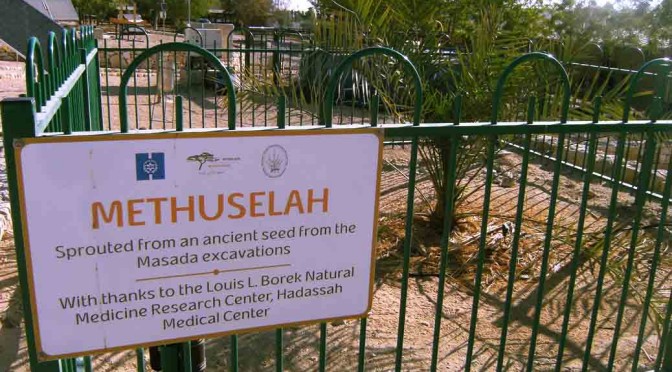By Anupum Pant
At Herod the Great’s palace in Masada, Israel, from the year 1963 to 1965 an excavation was carried out. It was an excavation which blew everyone’s mind. As a result of this archaeological endeavour, an ancient jar containing date palm (Judean Palm) seeds was unearthed. The radio dating of these seeds confirmed that they were about 2000 years old. Like all other excavated material, the seeds too were sent into a safe storage at the Bar-Ilan University. For the next 40 years, these seeds remained in the storage.
The seeds which were unearthed belonged to a plant which in its time had flourished for thousands of years. Around 150 AD the tree went extinct. None of them remained. However, the seeds did…
In the year 2005, a researcher, Elaine Solowey, decided to plant the seed. Elaine was pretty sure that a 2000 year old seed would be totally dead by now, and there’s a little chance it would even sprout. She went ahead anyway.
Elaine did a deep research on how to revive old seeds. Then, she first soaked them in hot water. And then in a nutrient rich solution. Finally they were put in contact with an enzymatic fertilizer.
To her surprise the seed did germinate. But when it did come out, Elaine was pretty sure that the sapling would die out. It didn’t. Although there were claims of a 32,000 year old germinated seed later in the year 2012, in its time, the Judean palm’s name had gone into the record books as the oldest seed to have ever sprouted…
The tree has been named Methuselah after the oldest person named in the Old Testament of the Bible. Today the plant still continues to grow and has even made its first flowers.


